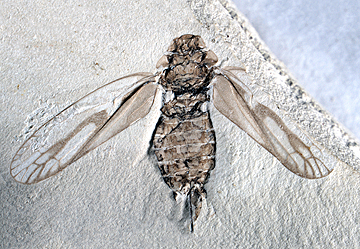Abstract
Amber is a fossilized plant resin that is preserved and modified throughout geological time (Langenheim, 1969). The complexity of the chemical composition of amber makes it unique considering the preservation of biological inclusions in their 3D pristine and minute details (Langenheim, 2003). Its age ranges between a few millions and 320 million years (mid-Carboniferous) (Sargent Bray & Anderson, 2009). During the past two to three decades, the discoveries worldwide of new amber outcrops have increased. There is no doubt that Jurassic Park in 1993, the famous American science fiction adventure thriller film directed by Steven Spielberg and based on the novel of the same name by Michael Crichton, played a noticeable role in making amber more popular. Before this date, interest in amber was mainly restricted to Baltic and Caribbean countries, though amber occurrence was known from several localities worldwide.
References
Azar, D. (1997) A new method for extracting vegetal and insect fossils from the Lebanese amber. Palaeontology, 40, 1027–1029.
Azar, D. (2007) Preservation and accumulation of biological inclusions in Lebanese amber and their significance. Comptes Rendus Palevol, 6, 151–156.
https://doi.org/10.1016/j.crpv.2006.10.004
Azar, D. (2012) Lebanese amber: a “Guinness Book of Records”. Annales Universitatis Paedagogicae Cracoviensis, 111, 44–60.
Azar, D., Gèze, R., El-Samrani, A., Maalouly, J. & Nel, A. (2010) Jurassic amber in Lebanon. Acta Geologica Sinica-English Edition, 84, 977–983.
https://doi.org/10.1111/j.1755-6724.2010.00228.x
Azar, D. & Nel, A. (1998) Lebanese Lower Cretaceous amber. Meganeura, 2, 18–20.
Dubertret, L. (1951) Carte géologique au 50 000e – Feuille de Sir Ed Danié. République Libanaise, Ministère des Travaux Publics, 51 pp. + 12 pls. + map.
Langenheim, J.H. (1969) Amber: a botanical inquiry. Science, 163, 1157–1169.
https://doi.org/10.1126/science.163.3872.1157
Langenheim, J.H. (2003) Plant resins: chemistry, evolution, ecology, and ethnobotany. Timber Press Inc., Portland, 586 pp.
Maksoud, S., Azar, D, Granier, B. & Gèze, R. (2017) New data on the age of the Lower Cretaceous amber outcrops of Lebanon. Palaeoword, 26 (2), 331–338.
https://doi.org/10.1016/j.palwor.2016.03.003
Nohra, Y., Azar, D., Gèze, R., Maksoud, S., El-Samrani, A. & Perrichot, V. (2013). New Jurassic outcrops from Lebanon. Terrestrial Arthropod Reviews, 6, 27–51.
https://doi.org/10.1163/18749836-06021056
Poinar, G.O. & Milki, R. (2001) Lebanese amber: the oldest insect ecosystem in fossilized resin. Oregon State University Press, Corvallis, Oregon, 96 pp.
Sargent Bray, P. & Anderson. K.B. (2009) Identification of Carboniferous (320 million years old) class Ic amber. Science, 326,132–134.
https://doi.org/10.1126/science.1177539
Schmidt, A.R., Jancke, S., Lindquist, E.E., Ragazzi, E., Roghi, R., Nascimbene, P.C., Schmidt, K., Wappler, T. & Grimaldi. D.A. (2012) Arthropods in amber from the Triassic period. Proceedings of the National Academy of Sciences of the United States of America, 109, 14796–14801.

